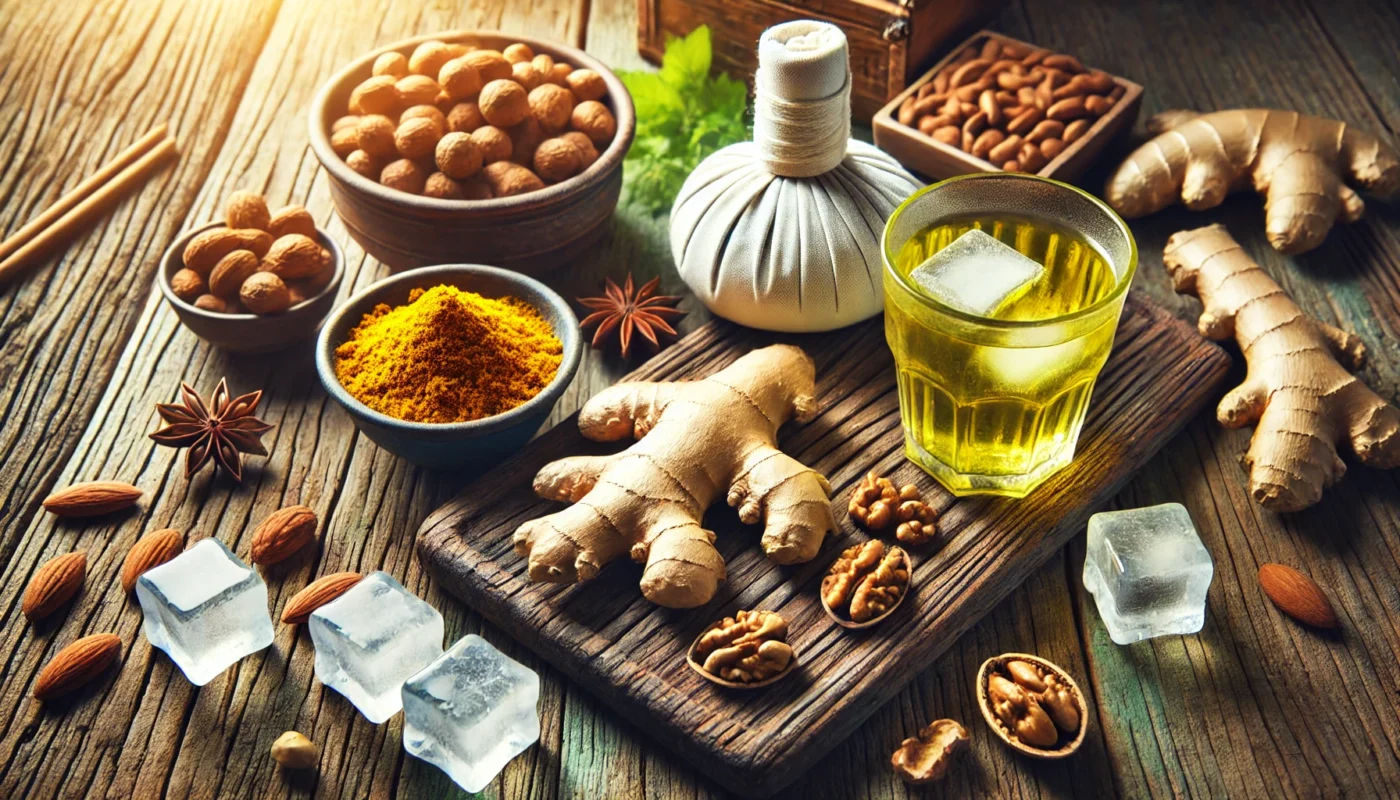Swelling is the result of fluid accumulation in the body’s tissues. This can occur due to various reasons, including:
Injury or Trauma
Injury or trauma to the body is one of the most common causes of swelling. When tissues are damaged, the body’s natural response is to send more blood to the area, which can cause swelling. This increased blood flow is part of the healing process, bringing nutrients and immune cells to aid in tissue repair. However, excessive swelling can be uncomfortable and may impede mobility, making it important to manage effectively.
Infections
Bacterial or viral infections can lead to inflammation and swelling as the immune system fights off the invaders. Swelling from infections is often accompanied by redness, heat, and pain, indicating the body’s active defense against pathogens. Conditions like cellulitis or abscesses are classic examples where infection-induced swelling occurs, and addressing the underlying infection is crucial for reducing swelling in such cases.
Chronic Conditions
Chronic medical conditions can lead to persistent or recurring swelling. Diseases such as heart failure, kidney disease, and arthritis are known to cause edema due to impaired circulation or inflammation. In heart failure, for instance, the heart’s decreased efficiency can result in fluid buildup in the legs or abdomen. Similarly, kidney disease can lead to fluid retention due to the kidneys’ reduced ability to filter blood.
Dietary Habits
Diet plays a significant role in fluid balance in the body. High sodium intake can lead to fluid retention, contributing to swelling. Consuming processed foods, which are often high in salt, can exacerbate this issue. On the other hand, a diet rich in fresh fruits, vegetables, and whole grains can help manage sodium levels and prevent fluid accumulation.
Recognizing the underlying cause of swelling is the first step in addressing it effectively. A thorough understanding of the root cause will guide you in choosing the most appropriate intervention and management strategies.
You May Also Like: Managing Pain Through Dietary Choices
Quick-Action Strategies to Reduce Swelling
Elevation and Compression
One of the most immediate strategies to reduce swelling is elevation. By raising the swollen area above the level of the heart, you can facilitate fluid drainage and reduce swelling. This position allows gravity to aid in the movement of fluid away from the affected area, promoting quicker recovery. Compression with an elastic bandage can also help decrease swelling by preventing fluid accumulation. This method provides support to the tissues, reducing the likelihood of further injury and promoting healing.
Cold Therapy
Applying ice packs or cold compresses can constrict blood vessels, reducing blood flow to the affected area and consequently, swelling. This method is especially effective within the first 48 hours of the onset of swelling due to injury. Cold therapy not only reduces swelling but also numbs the area, providing pain relief. It is crucial to apply cold therapy correctly, typically in 20-minute intervals, to prevent frostbite or skin damage.
Anti-inflammatory Foods
Incorporating anti-inflammatory foods into your diet can be a powerful strategy to combat swelling. Foods rich in omega-3 fatty acids, such as salmon and walnuts, as well as spices like turmeric and ginger, have been shown to reduce inflammation. These foods can modify inflammatory pathways in the body, helping to mitigate swelling over time. Including a variety of colorful fruits and vegetables in your diet ensures a broad range of phytonutrients that support overall health and inflammation reduction.
Hydration and Detoxification
Staying well-hydrated is essential for reducing swelling. Water helps flush out toxins and can prevent fluid retention. Adequate hydration supports kidney function and helps maintain the body’s fluid balance. Consider detoxifying your body with natural diuretics like green tea, dandelion tea, or parsley, which can help eliminate excess fluids. These natural remedies can be easily incorporated into your daily routine, promoting regular detoxification and reducing the likelihood of edema.
Gentle Massage Techniques
Gentle massage can promote circulation and lymphatic drainage, helping to reduce swelling. Techniques such as lymphatic drainage massage are specifically designed to encourage the movement of lymph fluids, reducing congestion in the tissues. A light, rhythmic massage can be performed at home or by a professional therapist, offering both physical and psychological benefits. Massage can also alleviate discomfort associated with swelling, providing a soothing and relaxing experience.

Vitamins and Supplements for Swelling Reduction
Vitamin C and Bioflavonoids
Vitamin C, along with bioflavonoids, can strengthen blood vessels and reduce permeability, thereby decreasing swelling. Citrus fruits, berries, and leafy greens are excellent sources of these nutrients. These antioxidants support the immune system and enhance collagen production, essential for maintaining healthy blood vessels. Supplementing with vitamin C and bioflavonoids can be particularly beneficial during periods of increased physical stress or recovery from injury.
Magnesium
Magnesium is known for its ability to reduce fluid retention. It can be found in foods such as almonds, spinach, and dark chocolate or taken as a supplement. Magnesium supports muscle relaxation and nerve function, which can be beneficial for reducing swelling associated with muscle tension or spasms. It is also involved in over 300 biochemical reactions in the body, highlighting its importance in overall health and well-being.
Bromelain
An enzyme found in pineapples, bromelain has been shown to reduce inflammation and swelling, particularly after surgery or injury. Bromelain works by breaking down proteins that can contribute to inflammation, making it a valuable natural supplement for post-injury recovery. Its anti-inflammatory properties can also be beneficial for those with chronic inflammatory conditions, providing a natural alternative to traditional medications.
Omega-3 Fatty Acids
Omega-3 fatty acids are powerful anti-inflammatory agents found in fish oil supplements and certain plant oils. These fatty acids help modulate inflammatory responses in the body, reducing swelling and pain. Regular intake of omega-3s can support cardiovascular health and improve joint function, making them an excellent addition to a swelling management plan. Including sources of omega-3s, such as flaxseeds or chia seeds, in your diet can further enhance their benefits.
Herbal Supplements
Herbal supplements such as ginger, turmeric, and boswellia have been used traditionally to reduce inflammation and swelling. These herbs contain active compounds that interfere with inflammatory pathways, providing natural relief from edema. Ginger and turmeric, in particular, are well-researched for their anti-inflammatory effects and can be easily incorporated into meals or taken as supplements. Consulting with a healthcare provider before starting any new supplement regimen is advisable to ensure safety and efficacy.

Long-term Strategies for Swelling Management
Regular Exercise
Engaging in regular physical activity enhances circulation, which can help reduce and prevent swelling. Low-impact exercises like walking, swimming, or yoga are particularly beneficial for those prone to edema. Exercise promotes muscle contractions that help pump fluid through the lymphatic system, reducing fluid buildup. Incorporating strength training can also improve muscle tone and support joint health, further aiding in the management of chronic swelling.
Mindfulness and Stress Reduction
Stress can exacerbate inflammation and swelling. Practices such as meditation, deep breathing exercises, and yoga can help reduce stress levels and, in turn, manage swelling. Mindfulness techniques can improve emotional resilience and promote relaxation, counteracting the physical effects of stress. Regular practice of these techniques can lead to long-term improvements in stress management and overall health, reducing the likelihood of chronic inflammation.
Limiting Sodium Intake
Excessive salt consumption is a common cause of fluid retention. Reducing sodium intake by avoiding processed foods and opting for fresh, whole foods can significantly help in managing swelling. Reading food labels and choosing low-sodium alternatives can make a big difference in daily salt consumption. Flavoring meals with herbs and spices instead of salt can enhance taste while supporting a healthy fluid balance.
Maintaining a Healthy Weight
Maintaining a healthy weight is essential for reducing the risk of chronic swelling. Excess body weight can increase pressure on the circulatory system, leading to fluid retention and edema. A balanced diet combined with regular physical activity can support weight management, reducing the burden on the body’s systems. Achieving and maintaining a healthy weight can also improve joint health and reduce the risk of related conditions such as arthritis.
Regular Medical Check-ups
Regular medical check-ups can help identify underlying health issues that may contribute to swelling. Conditions such as hypertension, diabetes, or kidney disease can lead to edema if not managed properly. Routine health assessments allow for early detection and intervention, preventing complications and improving overall health outcomes. Working closely with healthcare providers ensures that swelling is effectively managed and underlying conditions are addressed.
How Long Does It Take to Reduce Inflammation?
The duration of inflammation and swelling reduction varies depending on the cause. Acute swelling from an injury may subside within a few days with proper care, while chronic swelling associated with a medical condition may require ongoing management and lifestyle adjustments.
Acute Swelling
For acute swelling resulting from injuries, such as sprains or strains, the application of immediate care measures can lead to noticeable improvement within 24 to 72 hours. Techniques such as R.I.C.E (Rest, Ice, Compression, Elevation) play a critical role in minimizing damage and promoting rapid recovery. Early intervention is crucial to prevent complications and ensure a swift return to normal activities.
Chronic Swelling
Chronic swelling, often linked to medical conditions like lymphedema or venous insufficiency, may persist for extended periods. Effective management of chronic swelling typically involves a combination of lifestyle changes, medical treatments, and continuous monitoring. Adopting a proactive approach, including adherence to prescribed therapies and lifestyle modifications, is essential for long-term control and reduction of symptoms.
Individual Variability
Individual variability plays a significant role in the duration and resolution of swelling. Factors such as age, overall health, and the presence of comorbidities can influence the body’s ability to heal and reduce inflammation. Personalized treatment plans, developed in collaboration with healthcare professionals, can address specific needs and optimize outcomes. Understanding and respecting individual differences ensures a tailored approach to swelling management.

Conclusion: Empowering Your Swelling Management
Swelling can be managed effectively with a combination of immediate and long-term strategies. By understanding the causes and implementing these evidence-based approaches, you can reduce swelling quickly and improve your overall health and well-being. Whether you’re a fitness enthusiast, health enthusiast, or managing a medical condition, these strategies offer practical solutions to help you regain comfort and mobility.
Comprehensive Approach
A comprehensive approach to swelling management encompasses both preventive and reactive strategies. Combining dietary adjustments, physical activity, and stress management with medical interventions can provide a holistic solution to edema. This multifaceted approach ensures that all aspects of health are considered, leading to more sustainable improvements in swelling and overall wellness.
Professional Guidance
Remember, it’s always advisable to consult with a healthcare professional if swelling persists or is accompanied by other concerning symptoms. Professional guidance can provide valuable insights into the underlying causes and recommend appropriate interventions. Collaborating with healthcare providers ensures that swelling is managed safely and effectively, reducing the risk of complications.
Empowerment through Knowledge
Taking proactive steps in understanding and managing swelling will empower you to lead a healthier, more fulfilling life. Educating yourself about the factors that contribute to swelling and the strategies available to address it puts you in control of your health. Empowerment through knowledge fosters confidence and autonomy, enabling you to make informed decisions and achieve optimal health outcomes.
Further Reading:
7 Ways to Reduce Swollen Feet at Home
Swollen Feet and Ankles: Treatments to Try
stress management, inflammation, swelling, mindfulness, healthy weight, sodium intake, medical check-ups, chronic swelling, acute swelling, edema, lifestyle changes, health management, holistic health, nutrition, physical activity, healthcare guidance, wellness strategies, empowerment, self-care, injury recovery
Important Note: The information contained in this article is for general informational purposes only, and should not be construed as health or medical advice, nor is it intended to diagnose, prevent, treat, or cure any disease or health condition. Before embarking on any diet, fitness regimen, or program of nutritional supplementation, it is advisable to consult your healthcare professional in order to determine its safety and probable efficacy in terms of your individual state of health.
Regarding Nutritional Supplements Or Other Non-Prescription Health Products: If any nutritional supplements or other non-prescription health products are mentioned in the foregoing article, any claims or statements made about them have not been evaluated by the U.S. Food and Drug Administration, and such nutritional supplements or other health products are not intended to diagnose, treat, cure, or prevent any disease.

